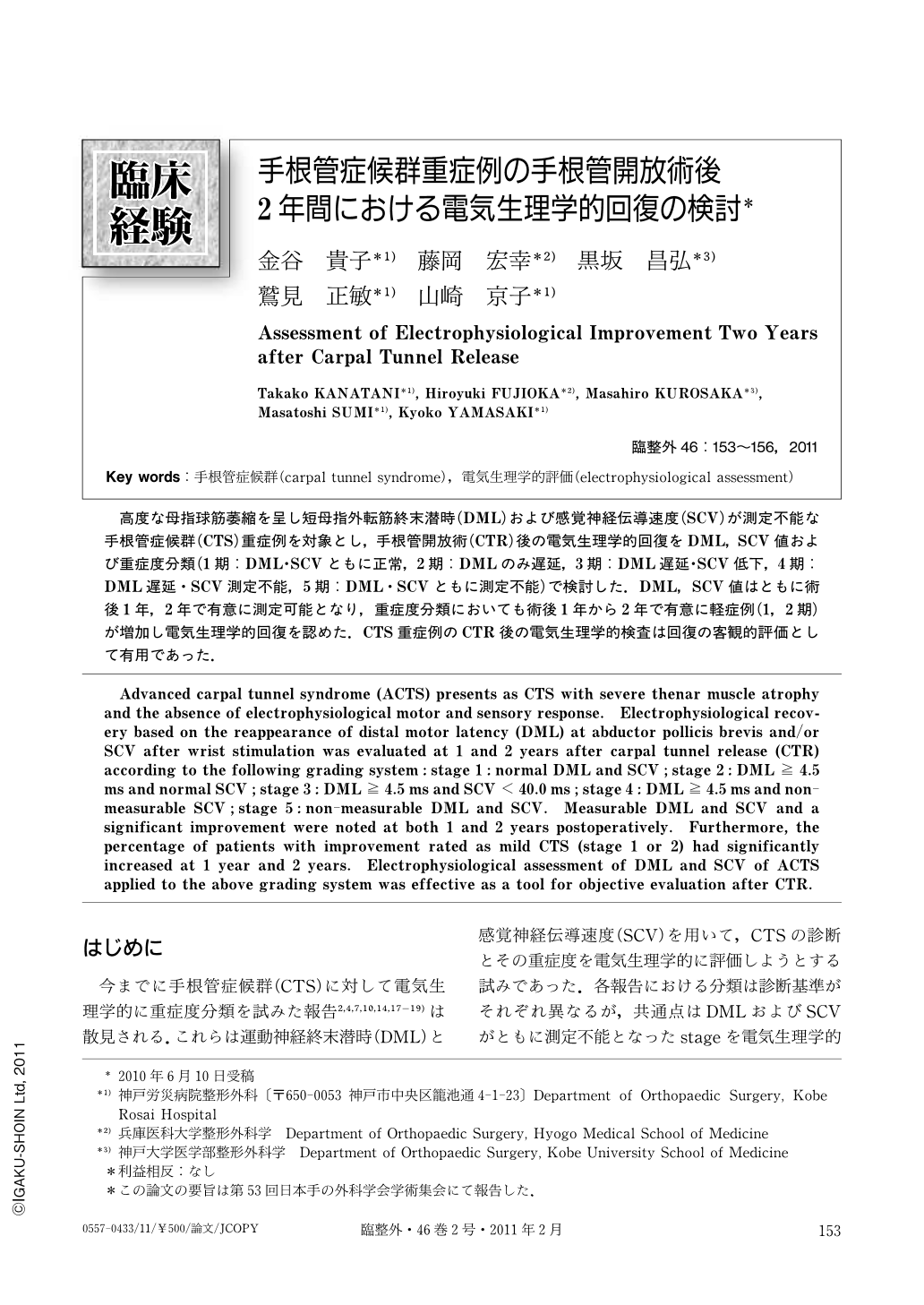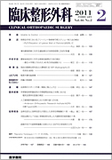Japanese
English
- 有料閲覧
- Abstract 文献概要
- 1ページ目 Look Inside
- 参考文献 Reference
高度な母指球筋萎縮を呈し短母指外転筋終末潜時(DML)および感覚神経伝導速度(SCV)が測定不能な手根管症候群(CTS)重症例を対象とし,手根管開放術(CTR)後の電気生理学的回復をDML,SCV値および重症度分類(1期:DML・SCVともに正常,2期:DMLのみ遅延,3期:DML遅延・SCV低下,4期:DML遅延・SCV測定不能,5期:DML・SCVともに測定不能)で検討した.DML,SCV値はともに術後1年,2年で有意に測定可能となり,重症度分類においても術後1年から2年で有意に軽症例(1,2期)が増加し電気生理学的回復を認めた.CTS重症例のCTR後の電気生理学的検査は回復の客観的評価として有用であった.
Advanced carpal tunnel syndrome (ACTS) presents as CTS with severe thenar muscle atrophy and the absence of electrophysiological motor and sensory response. Electrophysiological recovery based on the reappearance of distal motor latency (DML) at abductor pollicis brevis and/or SCV after wrist stimulation was evaluated at 1 and 2 years after carpal tunnel release (CTR) according to the following grading system:stage 1:normal DML and SCV;stage 2:DML ≧ 4.5 ms and normal SCV;stage 3:DML ≧ 4.5 ms and SCV < 40.0 ms;stage 4:DML ≧ 4.5 ms and non-measurable SCV;stage 5:non-measurable DML and SCV. Measurable DML and SCV and a significant improvement were noted at both 1 and 2 years postoperatively. Furthermore, the percentage of patients with improvement rated as mild CTS (stage 1 or 2) had significantly increased at 1 year and 2 years. Electrophysiological assessment of DML and SCV of ACTS applied to the above grading system was effective as a tool for objective evaluation after CTR.

Copyright © 2011, Igaku-Shoin Ltd. All rights reserved.


